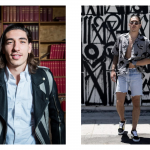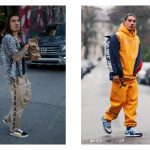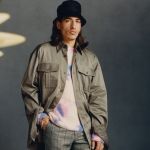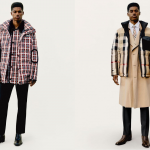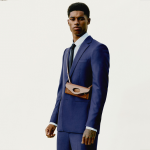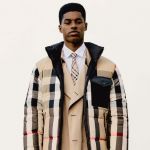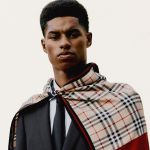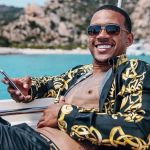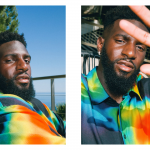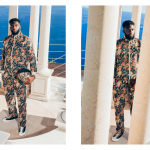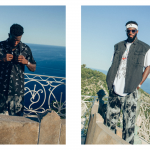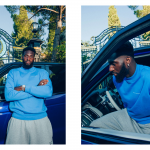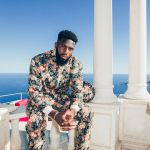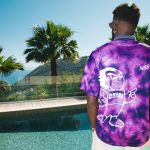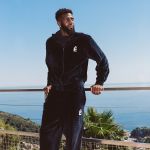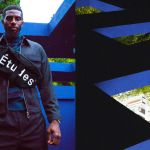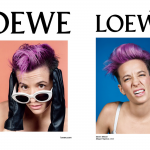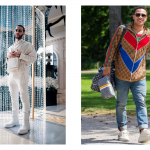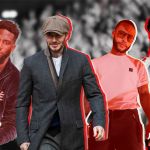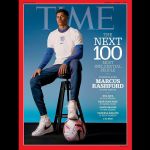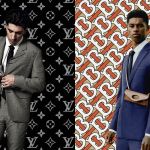
The new role of footballers in the fashion industry
And how fashion brands contribute to making them iconic
January 15th, 2021
The role of footballers, especially off the pitch, has completely changed over the last ten years.
In a feature by Vogue Business, Lucy McGuire explains how soccer players have replaced actors in the fashion chessboard. In the title "Forget actors, footballers are the new fashion icons" there is the whole transformation of value composed not only of goals, assists and results.
The examples that McGuire cites are the most famous: Depay x Valentino, Rapinoe x Loewe, Rashford x Burberry, Bellerín x Louis Vuitton, Bakayoko x Études.. Names that represent the tip of an iceberg that is emerging more and more, testifying to the fact that the new fashion icons come from a football field and no longer just from Hollywood sets.
This process that evolves year after year tells of radical changes taking place, changes that involve all the parties involved. The planetary celebrity culture of the 90s and the first decade of the 2000s saw players like Ronaldo, Beckham and Totti at the height of visibility and sporting iconicity. But being global icons at that time meant something else: social networks were in full development, the idea of luxury was almost opposite to the perception we have now, but above all players rarely external values far from the playing field. David Beckham and Héctor Bellerín are two global fashion icons, but they have lived through completely different historical moments and this makes them part of the same process, but distant in terms of results and interests.
Within this chessboard, a fundamental role belongs to social networks and new communication models. Ehsen Shah, founder and CEO of B-Engaged, the sports marketing agency that represents Bellerín, emphasizes precisely the approach to targets that were previously considered complex to reach and which now, thanks to the players, are part of the dialogue and in the strategies of a brand.
"We always have the problem that an old school football fan doesn't understand certain actions or plans, but we're not trying to communicate with them. It takes a very different strategy to talk to someone who doesn't speak the same language as you"
The authenticity that some players are able to communicate through their image on social networks is the real key to understanding how brands try to transform players into fashion icons. In other words, speaking to an audience of 150 million followers is becoming less important than the messages and values contained.
The focus of brands is changing directly in proportion to the engagement rate that certain players are able to generate. The strategies of the brands most attentive to these dynamics are based on objectives that consider the reason why of a campaign or a collection in a totally different way than a few years ago. The product is no longer the only protagonist, but alongside it there must be that plus that allows everyone to recognize that product.
The most fitting example is that of the collaboration between Burberry and Marcus Rashford: before inserting the face of the United striker in "Spring Summer 2021", the English brand chose to join Rashford's charity initiative by exploiting his active role in the fight against youth poverty and uniting it with the new garments of Riccardo Tisci's collection. In this partnership there is everything: the young face (1997) of Marcus, non-football interests, the visibility that a club like United can give, a story well told by the brand and the launch of a new collection that involves the player. The primary reason why is not sales and the product in the strict sense, but it is a different and much more useful perception of the brand itself.
To the social networks must be added that of the sector media, actors who are not protagonists but essential for the credibility of this change process. Bakayoko's interest in the world of fashion - which later resulted in an important investment such as the purchase of a brand like Études Studio - contributes to the growth of the mutual contamination of the "sport" and "fashion" sectors only if the right space is granted. to talk about issues like these. In the interview made for nss sports Digital Cover #00, the Napoli midfielder hits this point fully:
"I simply believe that the world of football has evolved and this is the right time for players like me or Bellerin to finally come forward and show that there is something else besides football in the life of a professional player. There was a time when fashion evolved organically to be worn first by movie stars, then by singers, for their performances on stage, but now sport and football are becoming an important part of life and inspiration of fashion and I think that's why for today young people can also identify themselves with footballers who understand and love fashion"
Bakayoko is a double voice in this case, because he is able to live and explain both the point of view of the brand and that of the player involved in these new mechanisms. Fashion brands are changing most of the rules of the game and are adapting above all to an increasingly experienced public: no longer the product at the center but the story that is created around it; the quantity of the listener is no longer preferred but quality.








